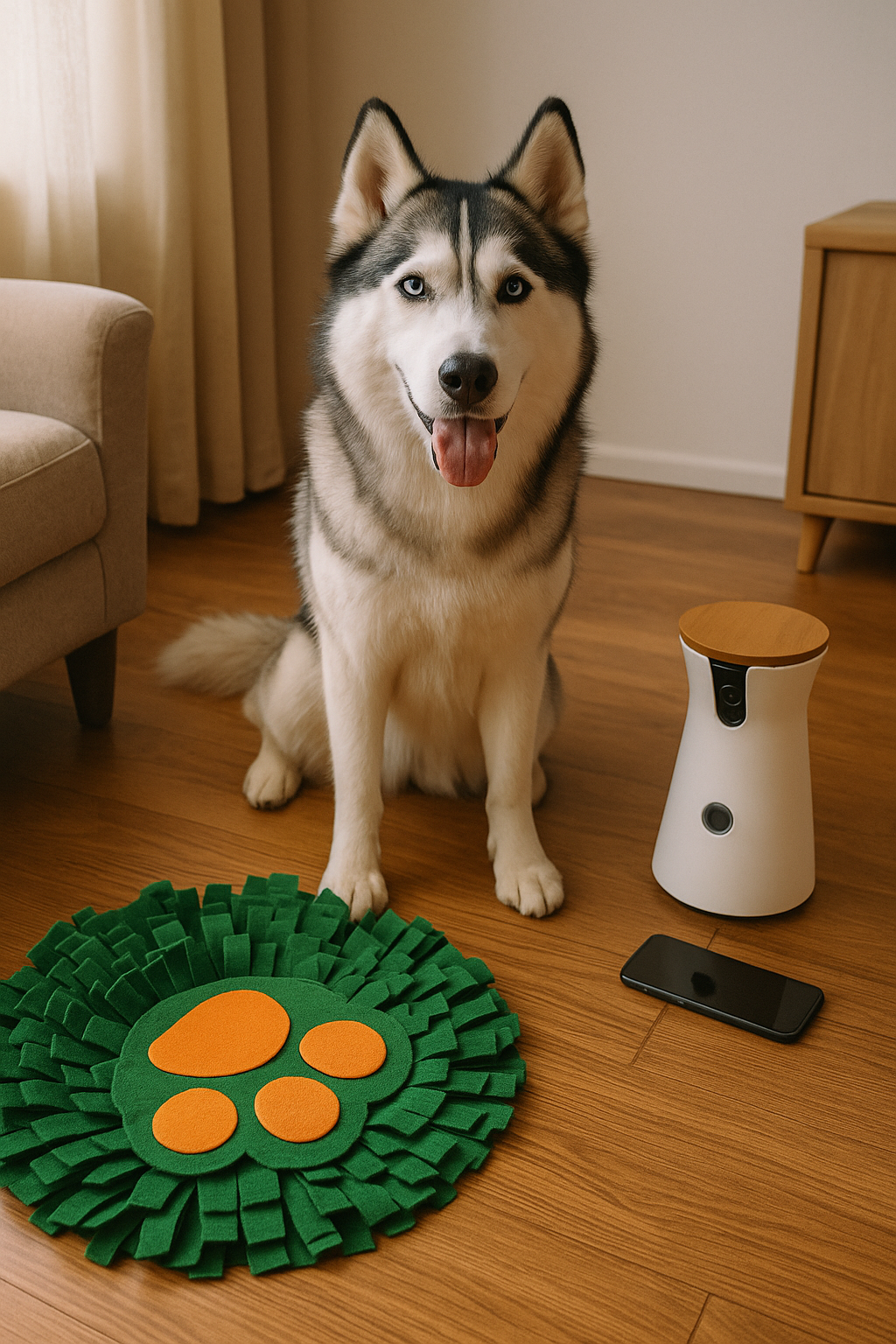Leaving your Husky home alone while you go to work can feel like a gamble. Will your apartment still be intact when you return? Will your neighbors complain about the howling? Or will your Husky spend the day bored, anxious, or worse—destructive?
Siberian Huskies are smart, energetic, and social. When their needs aren’t met, they don’t just wait quietly—they act out. But with the right plan, you can keep your Husky entertained, mentally stimulated, and calm—even during an 8-hour shift.
Here’s how to make solo time safer, happier, and less stressful for both of you.
Understand What Your Husky Needs While You’re Gone
Huskies don’t just need something to do—they need the right kind of stimulation:
- Mental enrichment to keep their minds engaged
- Physical movement to burn excess energy
- Emotional comfort to reduce anxiety
- Clear structure to help them feel secure
You can’t be there in person, but you can set them up for success every time you leave the house.
Tip 1: Start the Day With a Tiring Routine
A Husky left alone with a full tank of energy will find ways to use it—chewing furniture, digging at the carpet, or trying to escape.
Before work, give them:
- A 30–45 minute walk, jog, or play session
- A short training session to stimulate their brain
- Time to potty and sniff around outdoors
- A few minutes of calm indoor play before leaving
Burning energy early sets the stage for a calm day.
Tip 2: Use Long-Lasting Enrichment Toys
Interactive toys are essential. They give your Husky something to focus on instead of chewing the walls.
Try:
- Frozen KONGs with peanut butter, yogurt, or banana
- Snuffle mats that hide kibble or treats
- Puzzle feeders that challenge problem-solving
- Lick mats for soothing, repetitive licking
- Chew-safe bones or durable toys (Benebone, Nylabone, Goughnuts)
Rotate toys every few days to prevent boredom. Only give certain toys when you leave to make them special.
Tip 3: Create a “Work Mode” Routine
Dogs thrive on structure. Establish a specific departure routine so your Husky knows what to expect.
Example:
- Morning walk
- Calm treat time (enrichment toy)
- Say “I’ll be back” (or a cue word)
- Leave without fuss or excitement
Avoid emotional goodbyes—they create anxiety. Keep departures low-key and predictable.
Tip 4: Use a Dog Camera or Smart Monitor
Technology can help you keep an eye on your Husky during the day:
- Watch for signs of stress, restlessness, or destruction
- Speak to them via two-way audio (if helpful)
- Drop treats remotely for calm behavior
- Track daily habits and triggers
Apps like Furbo, Petcube, or Wyze Cam are popular choices.
Tip 5: Hire a Dog Walker or Sitter Midday
If your schedule allows, have someone check in:
- A 30-minute midday walk or play session
- A trusted friend or professional dog walker
- Doggy daycare once or twice a week (for social interaction)
This helps break up long days and gives your Husky a needed physical and social outlet.
Tip 6: Block Out Distractions
Some Huskies bark or get anxious when they see people, cars, or animals outside. Reduce stimulation with:
- Closed curtains or blinds
- White noise machines
- Classical music or dog-calming playlists
- Covering the crate or safe area with a light sheet
Less outside input = more relaxation.
Tip 7: Use a Safe, Designated Space
Rather than giving them the run of the house, create a “calm zone” with:
- A comfortable bed or crate (if crate-trained)
- Favorite toys
- Water and a fan or cooling mat
- No tempting shoes, wires, or furniture to destroy
This safe space reduces overwhelm and helps your Husky self-soothe.
Tip 8: Train Independence While You’re Home
If your Husky follows you from room to room, start building solo confidence:
- Practice leaving the room for short periods
- Don’t let them sleep next to you all the time
- Reward calm behavior when they’re alone
- Avoid excessive attention for clingy behavior
This helps reduce separation anxiety long before you ever leave for work.
Tip 9: Make Evenings Count
Once you’re home, don’t forget to reconnect. Give your Husky:
- Another walk or run
- Playtime
- Trick training
- Grooming and cuddles
- A peaceful bedtime wind-down
This reinforces your bond and balances the solo time from earlier.
Final Thoughts: You Can’t Be There, But You Can Be Prepared
Leaving a Husky alone while you work doesn’t have to mean chaos or guilt. With a proactive plan, smart enrichment, and clear routines, your dog can stay calm, busy, and happy until you return.
Remember: a bored Husky will find their own fun. But an engaged Husky? That’s the kind of dog who naps peacefully while waiting for you to walk through the door.
